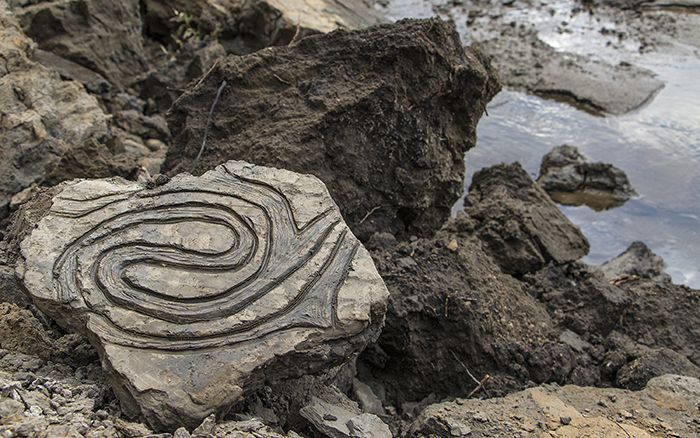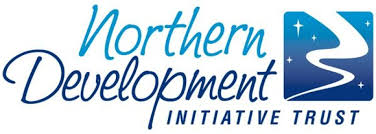
A meander line carved into clay. Photo provided courtesy of the artist.
“Winter was well fed this year. She licked the sky dry to store its energy in crystalline layers, like a bear stripping cranberries from branches.”
—kit fast, standing waves: the making of each moment
For this week’s edition, I sat down with interdisciplinary artist and curator kit fast to learn more about his ongoing project earthwork and his video essay standing waves: the making of each moment, which is featured in this year’s Wild Words North Festival. WWN is hosting virtual events now until September 27th. You can find fast’s video now on the festival website and Youtube page.
In the image above we see a curious and roughly carved line on a hunk of dried clay next to a waterbody. It is a perplexing visual that opens itself up to many questions: Why was this pattern carved? What does it represent? Who placed it there and why? This sort of thought provocation is exactly what the artist, kit fast, intended with his multimedia project earthwork. It is the result of his visits to Saskatoon Creek, between Rolla and Dawson Creek, for the past three years, which he has documented or marked in various ways.
This photograph of a meander line scraped into clay is one of many culminations of years of research, experimentation and introspection. In this body of work, fast has incorporated photography, ceramics, sculpture, essays and video to explore the breadth of questions he encountered on his visits, all of which stemmed from one simple inquiry: what does it mean to have a meaningful relationship with the land?
This is a fraught topic that demands consideration of one’s heritage, community, industry, the colonial history of Canada, and consequently, one’s family history. Himself a settler with a hazy, generally western European, Mennonite, Pennsylvania Dutch, as well as Ukrainian ancestry, kit fast acknowledges that his residing in Dawson Creek today is the result of a long chain of displacement and colonization that problematizes his relationship with Treaty 8. earthwork is his way of reconciling with that history, by initiating a dialogue between himself and the land he dwells on.
A project on the scale of earthwork can only be properly executed through a number of mediums, which fast has deftly combined in his video essay standing waves: the making of each moment. The artwork includes a reading of an original essay paired with video and images of Saskatoon Creek, which the artist has recorded with an appreciation that can only be achieved through a careful, sustained and respectful presence on the land.
The muddy water from surrounding clay banks and rocky shores are presented with a dignity that is not often afforded to one of the thousands of seemingly nondescript creeks in Treaty 8. kit fast uses his lens to reframe the land as an active, living, changing subject, rather than a static object. His writing is both descriptive and layered with multiple understandings of the land, blending poetry, prose and scientific terminology.
Through working on this project, fast has come to appreciate the land as the foundation of all things, where the interconnectedness of all beings and actions is discoverable to those who are willing and patient enough to experience it. He hopes his audience will share his vision and likewise interrogate their own place on this land.
Do you have an artistic endeavour you would like to promote? Or a topic you would like to know more about? I would love to hear from you! Please email me at programs@dcartgallery.ca.




